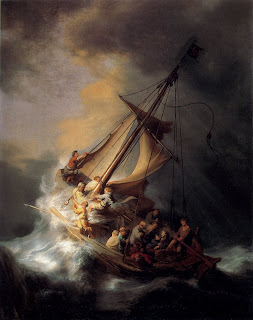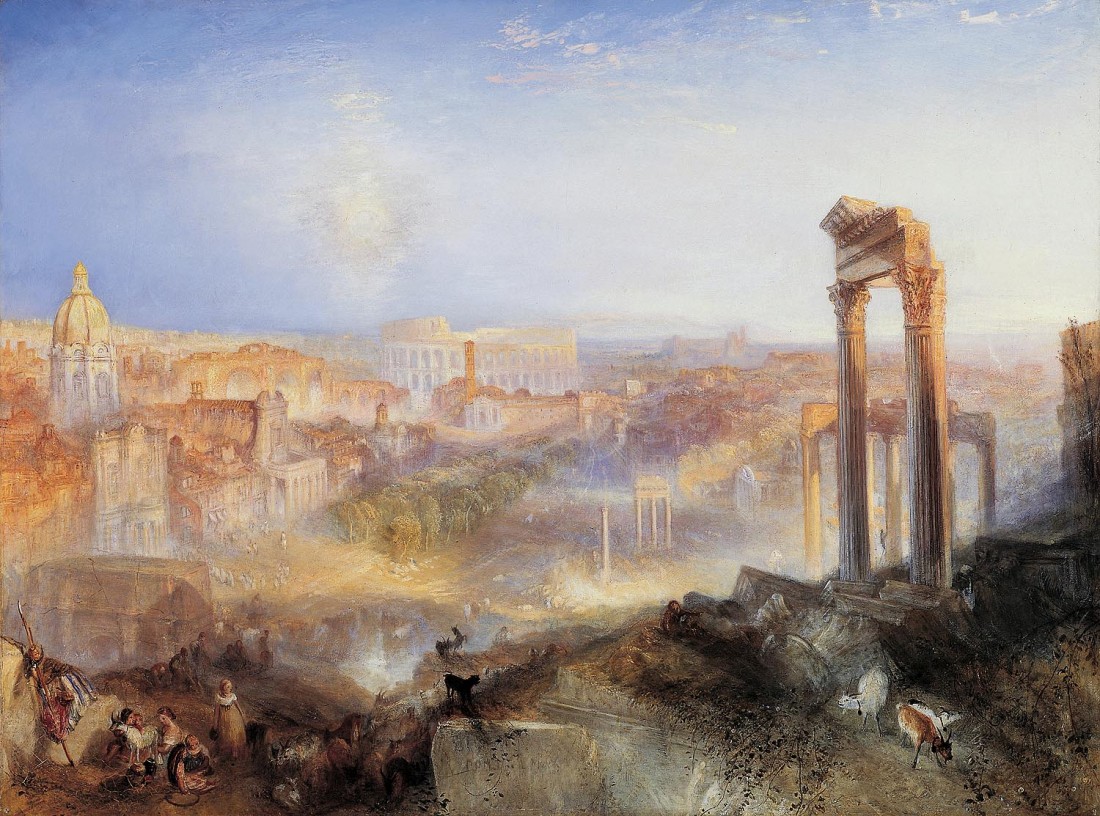Thursday, May 13th, 2010
A couple of months ago I posted about how much I want to see the terracotta soldiers in Xi’an. And now, after reading this recent post by CultureGrrl, I’m even more excited to see these soldiers. It was recently reported in China Daily that 114 new terracotta warriors have been unearthed, with most of the warriors painted in rich colors.
How cool! The China Daily report mentions that the warriors have “black hair; green, pink, or white faces; and black or brown eyes.” I wonder if the different face colors have any significance. (Do I have any readers with a background in Chinese art or culture?)
Pictures are supposed to be available within the month, but China Daily does have photos available here and here.
Monday, May 10th, 2010
Remember when there was a lot of hype over “La Bella Principessa,” the painting recently attributed to Leonardo? It looks like similar excitement has built over a new painting, which possibly could be attributed to Raphael (shown right). The painting was discovered in a storage room in the ducal palace of Este, located in Saussolo (outside of Modena, Italy). Mario Scalini, state art superintendent for the area, was going through the storage inventory and found the painting tucked away. After noticing the high quality of the painting, he wondered if it could actually be by Raphael (instead of an 18th century painting, as it was previously described). There was no record of a Raphael currently in the estate collection, but Scalini went through the ducal archives and found a 1663 reference that mentions a “portrait of a woman” by Raphael. There is no record that this Raphael painting was ever sold from the collection or loaned, so it could be that this painting was simply forgotten.
It will be interesting to see what results from tests and analysis of this painting. The History Blog points out that recent tests have revealed the painting was restored in the 17th and 19th centuries, which shows that the painting is older than the 18th century. In addition, these restorations also show that artwork was valued, since people made the effort to restore the painting throughout different centuries.
So, what do I think of the possible attribution to Raphael? I think it’s possible, but I’m trying to not get too excited. At this point, I think the most exciting discovery is that a Raphael painting was listed as part of the ducal collection. In regards to the painting itself, I’d recommend that you read this great post from Art History Today, in which the author discusses some reservations about the painting being by Raphael. I agree with the ideas that are presented there; I think it is possible that this painting might be by a student of Raphael (perhaps Giulio Romano?), but not the master himself.
Saturday, March 27th, 2010
J. M. W. Turner, Modern Rome – Campo Vaccino, 1839
This July, Turner’s painting Modern Rome – Campo Vaccino (1839, shown above) will appear on auction at Sotheby’s in London. This auction news has attracted quite a bit of attention as of late – and for good reason. First of all, this painting is absolutely stunning (don’t you agree?). Second, this is the last painting of Rome that Turner ever made. Turner traveled to Italy multiple times in his life, and even exhibited a small group of his work in Rome. Therefore, this last painting of Rome is historically important in regards to Turner’s career. And finally, this upcoming auction is significant because this painting has only been on the market one other time, back in 1878. Sotheby’s projects that the work to reach somewhere between $18 million and $27 million in the upcoming auction.
I sure wish I had that kind of cash lying around. I can only hope that this work will be purchased by a museum (or bought by a collector who permanently lends the painting to a museum). It is such a beautiful painting and so representative of Turner’s interests in light and color – it doesn’t seem right for the canvas to end up in a private collection. I think lots of people should have the chance to enjoy this painting.
For more links and commentary on the auction, see
here (Art History Today),
here (The History Blog), and
here (New York Times article).
P.S. I discovered the
Art History Today blog this past week. It’s really interesting and I highly recommend it.
Tuesday, March 23rd, 2010
 I haven’t had much chance to think about art over the past two days – which is ironic, because I’m busy prepping for an online course in contemporary art. Instead of thinking about Jeff Koons and Damien Hirst, though, I’ve been battling with my computer over technology/formatting issues for my recorded lectures. Bah.
I haven’t had much chance to think about art over the past two days – which is ironic, because I’m busy prepping for an online course in contemporary art. Instead of thinking about Jeff Koons and Damien Hirst, though, I’ve been battling with my computer over technology/formatting issues for my recorded lectures. Bah.
Anyhow, today two friends sent me variants of the same article (see
here and
here), and I welcomed the distraction (thanks, Kiersten and Rachsticle!). The articles discuss an unusual study which revolves around the food portions, particularly those in depictions of the Last Supper. Two brothers, Brian and Craig Wansink, analyzed and compared Last Supper scenes over the course of 1,000 years (including one of my favorite paintings,
Last Supper by Tintoretto (1592-94, shown above)). The researchers used the heads of the figures as a basis for comparison, and then measured the size of plates and entrees accordingly. As a result, it was discovered that the portions for meals increased gradually over 1,000 years: entrees increased by 70% and bread grew by 23%. Incidentally, the size of plates also grew by 65.6%.
Pretty interesting stuff. It looks like industrial farming and fast food chains are not solely responsible for the size of today’s food portions. Instead, portions seem to be a product of history. And hooray that art could help with the research for this project! Once again, art comes to the rescue!
Thursday, March 18th, 2010
 Twenty years ago today, two armed men entered the Isabella Stewart Gardner Museum and performed one of the biggest art heists in history. In a little over an hour, these two men stole an estimated $300-500 million by grabbing thirteen works of art. Some of the stolen paintings included Vermeer’s The Concert (1658-1660) and Rembrandt’s Storm on the Sea of Galilee (1633, shown right). This Rembrandt painting is especially of interest, since it is the only known seascape by the artist.
Twenty years ago today, two armed men entered the Isabella Stewart Gardner Museum and performed one of the biggest art heists in history. In a little over an hour, these two men stole an estimated $300-500 million by grabbing thirteen works of art. Some of the stolen paintings included Vermeer’s The Concert (1658-1660) and Rembrandt’s Storm on the Sea of Galilee (1633, shown right). This Rembrandt painting is especially of interest, since it is the only known seascape by the artist.
And now, twenty years later, investigators are making another effort to try and get the stolen art back. The Associated Press reported this week that two billboards have appeared on Interstates 93 and 495, advertising the $5 million reward.
I bet there aren’t a lot of crimes which receive billboard attention twenty years after the fact. Although I kind of doubt that billboard signs are going to help recover these famous works of art, who knows? I hope that the Gardner museum gets its collection back one day.
*The Isabella Stewart Gardner Museum has been in the news recently, due to a controversial modern wing that will be built onto the museum. You can read my take on the subject here.

